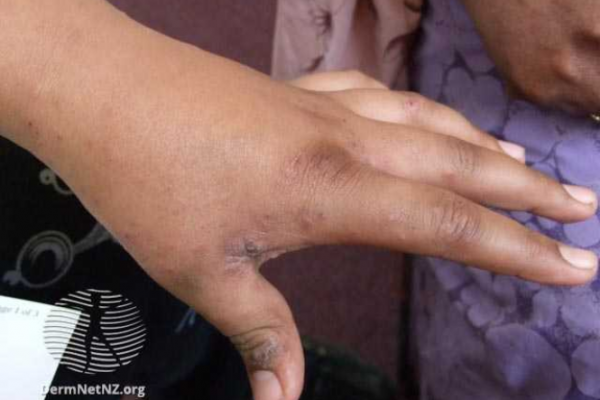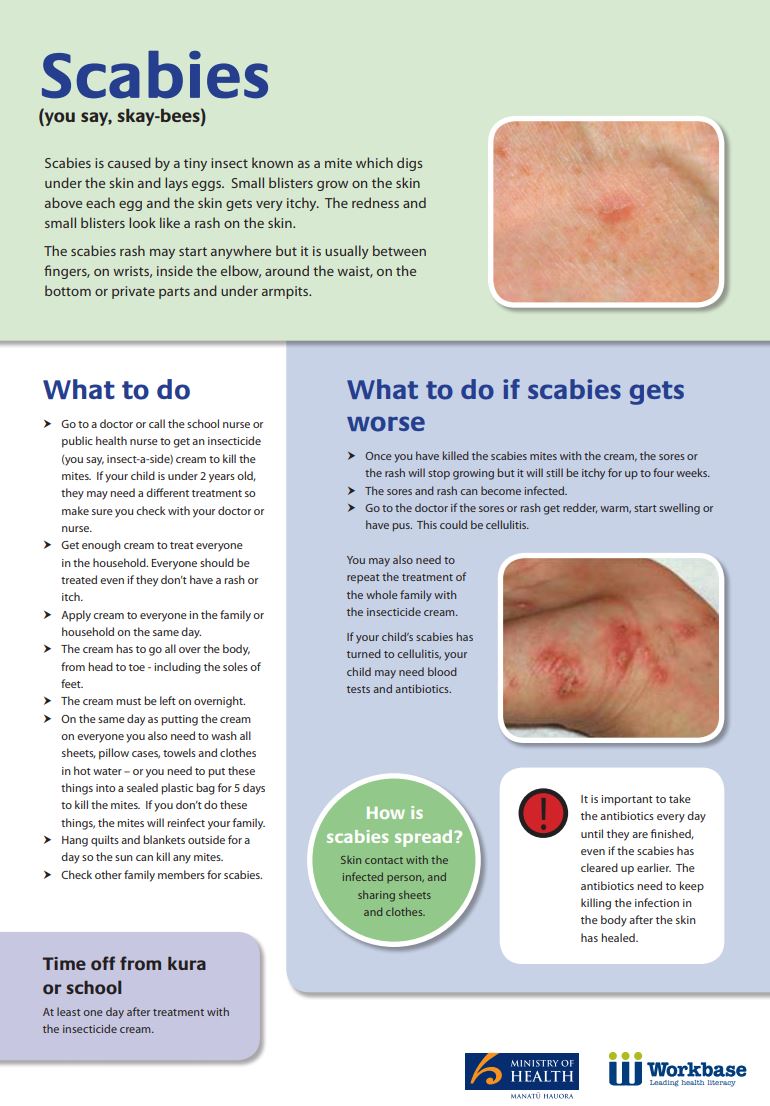- Scabies is spread through skin-to-skin contact with a person who has scabies, or through shared bedding or clothing.
- You need to treat scabies with a lotion or cream called permethrin. It won’t go away on its own.
- Everyone who lives in the same household as the infested person needs to be treated at the same time.
- Wash all clothing and bedding in hot water after treatment.
- The itch may continue for a few weeks even though the mite is gone.
- See your doctor if itchiness continues for longer than 6 weeks.
Scabies is caused by tiny mites that burrow along just under the surface of your skin, laying eggs as they go. Scabies mites are part of the arthropod family and are close cousins to spiders and ticks.
Scabies mites are so tiny you can't see them. Scabies is a reaction to the mites, mite poo (faeces) and mite eggs. Small lumps grow on your skin and your skin gets very itchy, especially at night. The redness and small lumps look like a rash on your skin.










